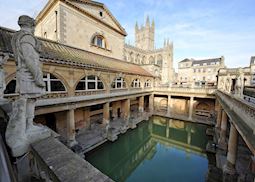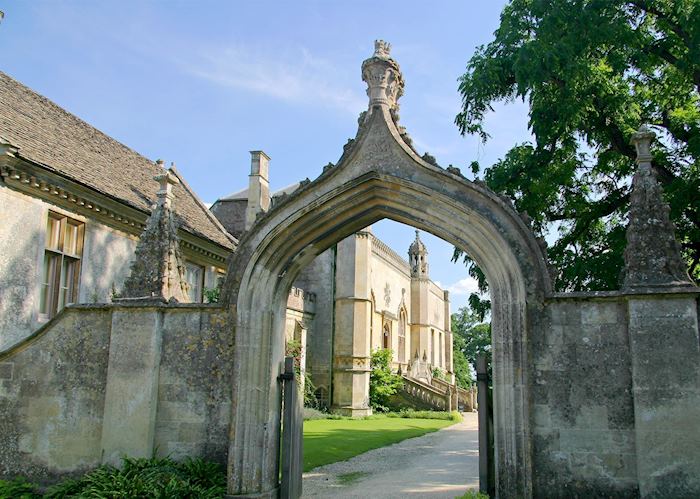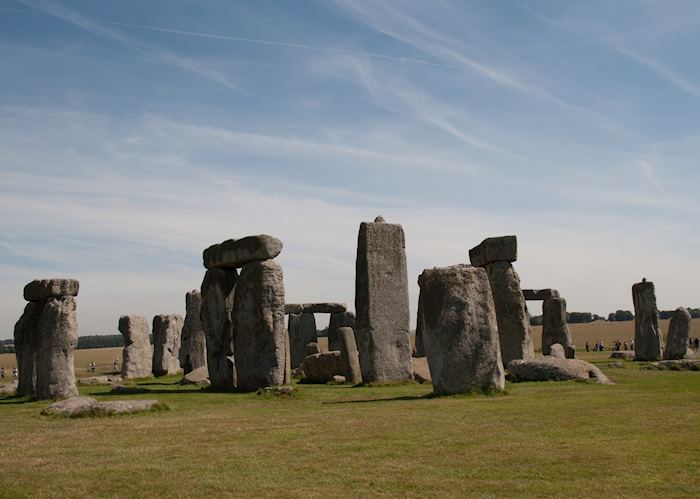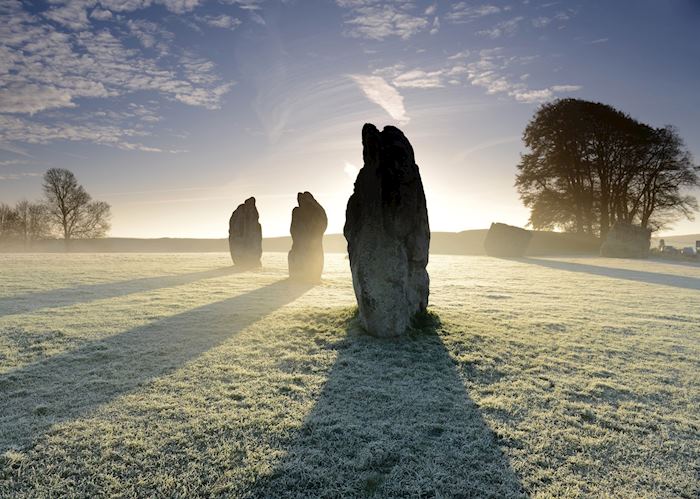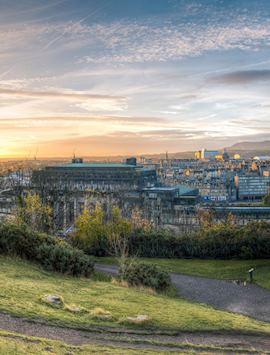From ancient monoliths standing silently against the sky to the arched cloisters of a well-preserved abbey, Britain’s long history is written in stone. This full-day tour, with time for lunch along the route, allows you to visit two of the country’s oldest monuments and a medieval abbey that was converted into a grand stately home in Tudor times. During the day, your guide also acts as your driver as you travel between places.
The enormous sarsen and smaller bluestone monoliths at Stonehenge stand by themselves, looking quite out of place, in a large expanse of field. As you approach them, you pass burial mounds that are visible in almost every direction from the stones and highlight the site’s importance.
While you won’t be able to enter the stone circle itself or touch the stones (they’ve been roped off since the late 1970s to protect the site), you can walk along a path that circles their perimeter.
Lacock Abbey, around 45 minutes from Stonehenge by car, is situated at the eastern end of Lacock village, up a long, stately drive through the abbey grounds. As you explore the grand building and its atmospheric cloisters you learn about its monastic past, then its later function as a Tudor household.
Mullioned windows and half-timbered walls offer beautifully preserved examples of Tudor architecture on the exterior of many of the buildings, including one of the oldest brewhouses in the country.
The abbey’s interiors display what life would have been like in the times of those who lived here. The oriel window in the South Gallery is forever linked with the pioneering Victorian photographer William Henry Fox Talbot, who inherited the abbey and used the window as his subject to produce the first photographic negative.
The abbey’s gardens and grounds include woodland paths, apple orchards, family trails, a botanic garden and wonderful views across the surrounding countryside.
Following your visit to Lacock Abbey, you’re driven onward to Avebury. This is a journey of around half an hour, wending through country roads to take in the lovely views and picturesque thatched-cottage villages.
The prehistoric site at Avebury comprises three circles, which partially encompass the present-day village and include the largest stone circle in Europe. Thought to date back to 3000 BC, this ancient monument is both historically important and also of significance to modern-day pagans, who gather here for the summer solstice.
A large, artificial chalk mound, Silbury Hill is located just five minutes’ drive down the road. It’s the largest man-made mound in Europe, with a height and volume comparable to those of the smaller Egyptian pyramids. Although the mound is known to date back to approximately 2400 BC, its purpose or significance remains a mystery.
At the end of your tour you’re driven back to your hotel.
